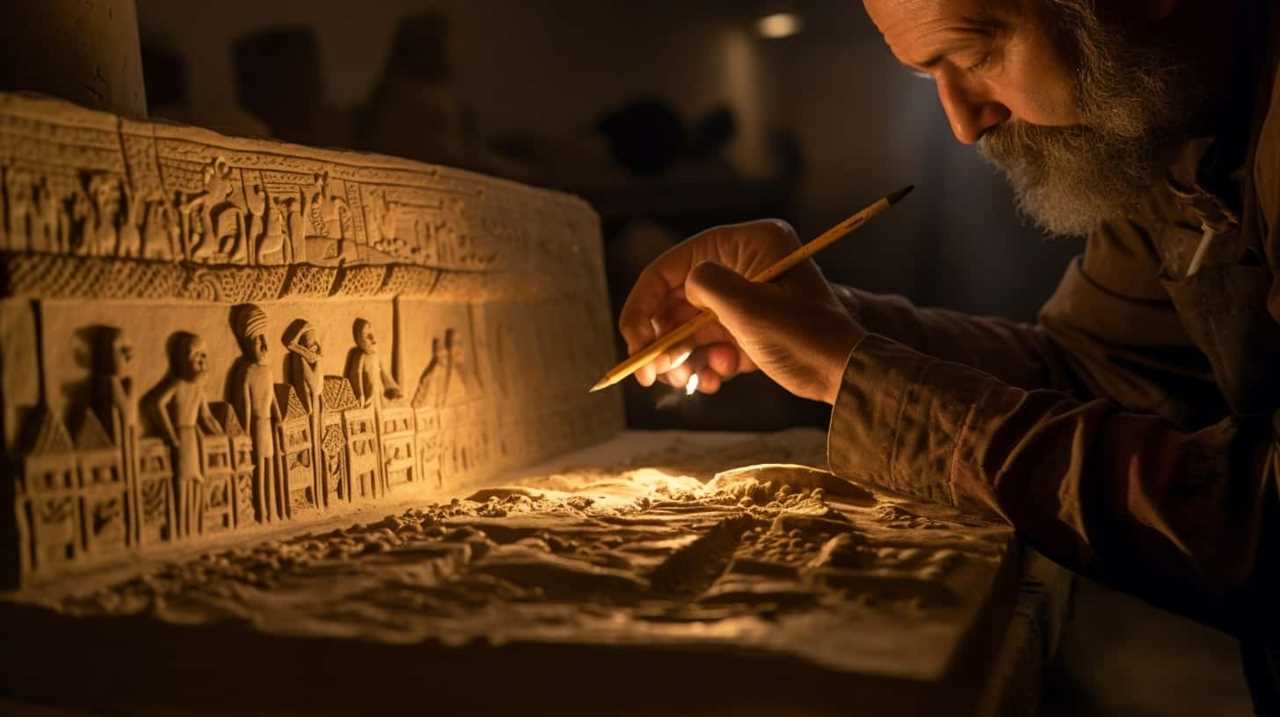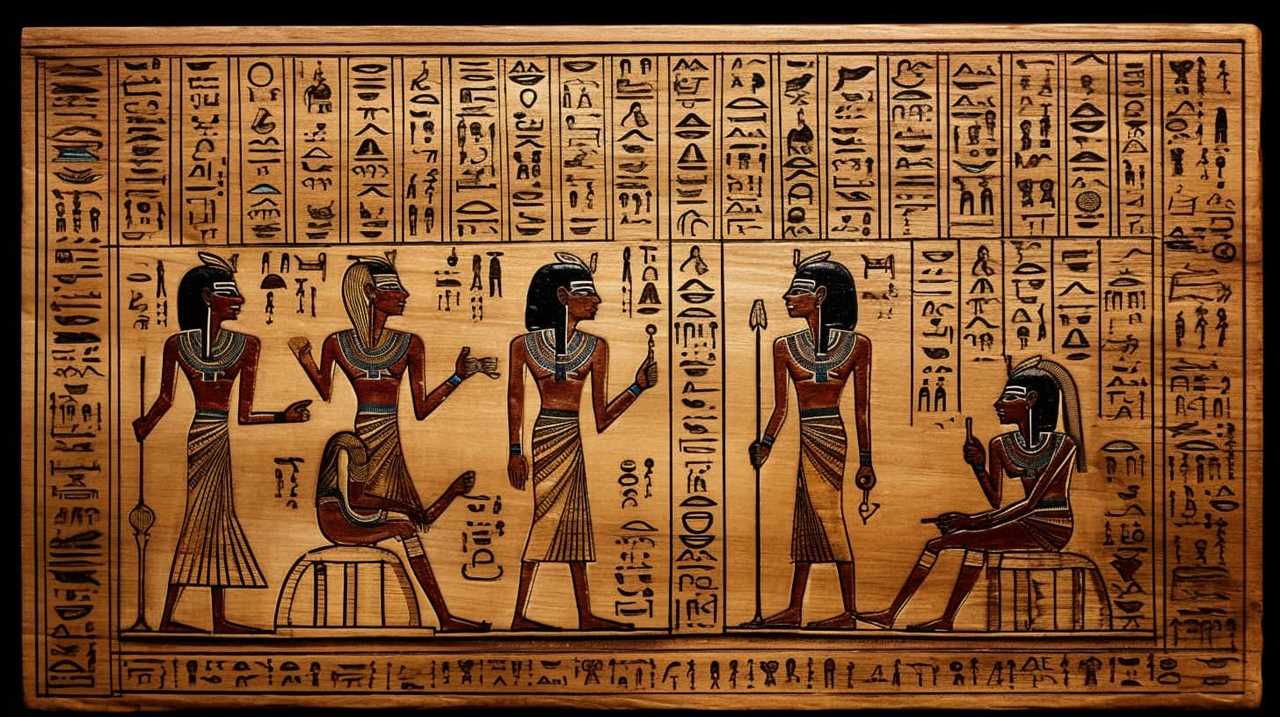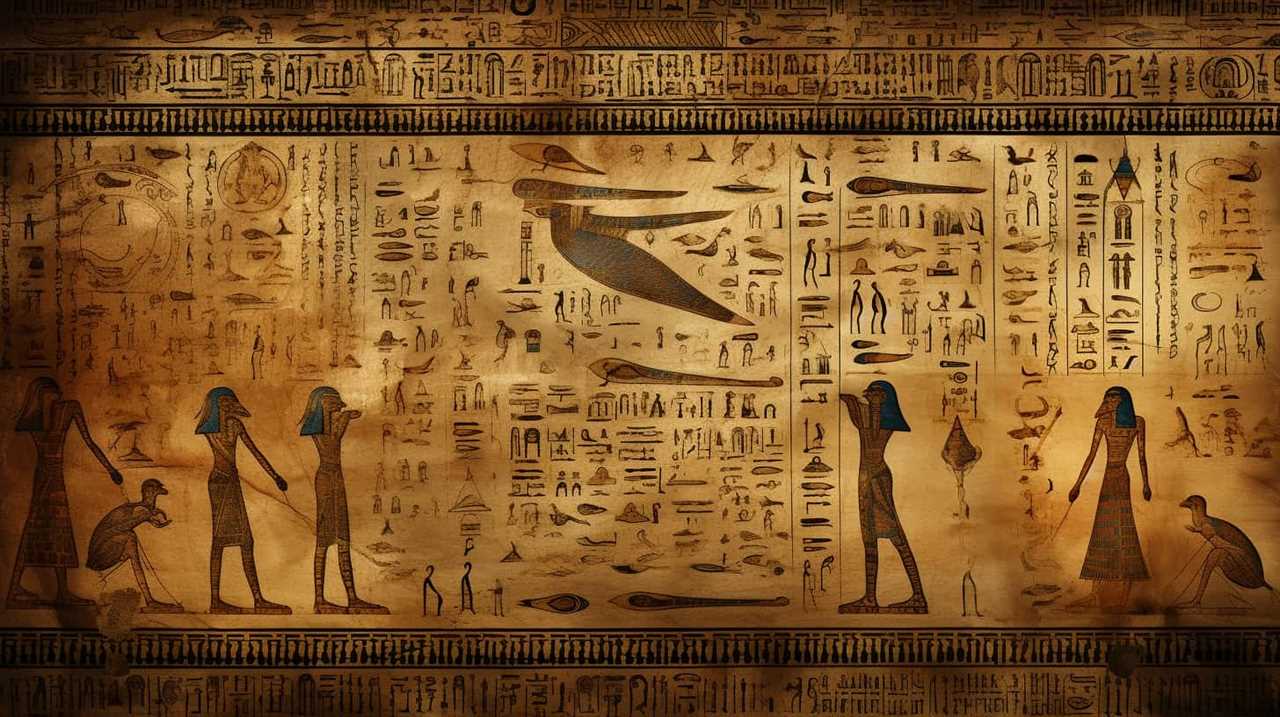Get ready, everyone, to delve into the historical context of famous Bible passages. Be prepared to be amazed as we uncover the fascinating origins of these timeless phrases that continue to inspire and guide millions of believers worldwide.
We will uncover the grandeur of the Creation, witness the awe-inspiring power of Noah’s Great Flood, and witness the profound covenant between Abraham and God. We will stand in awe as Moses receives the sacred Ten Commandments and witness the triumphant victory of David over the mighty Goliath.
Join us as we accompany Paul on his daring missionary journeys and listen intently to the profound Sermon at Athens. Finally, we will unravel the mysterious prophecies found in the Revelation of John and witness the remarkable spread of early Christianity.
So, fasten your seatbelts and get ready for a captivating exploration of these iconic verses that have shaped the course of history.

Key Takeaways
- The story of Noah and the Great Flood is found in various cultures and religions, providing evidence of a global flood event.
- Biblical figures such as Noah, Abraham, Moses, David, and Jesus play significant roles in biblical history and teach moral lessons.
- Jesus’ teachings, including the Sermon on the Mount and the Last Supper, have had a profound influence on Christian beliefs and continue to be relevant in modern society.
- Paul’s missionary journeys to key destinations had a significant impact on early Christianity, including the inclusion of Gentiles in the faith and the development of important theological arguments.
The Creation of the World
We, the authors, will now delve into the biblical account of the creation of the world. The topic of the creation of the world is a subject that has long been debated and discussed. One of the most well-known theories in science is the Big Bang, which suggests that the universe began with a massive explosion billions of years ago. This theory is supported by a wealth of scientific evidence and has become widely accepted in the scientific community.
On the other hand, creationism is a belief system that asserts that the world was created by a divine being, often referred to as God, in a relatively short period of time. This perspective is based on religious texts, such as the Bible, which describes a six-day creation process.
Evolution, on the other hand, is a scientific theory that explains the diversity of life on Earth through gradual changes and adaptations over time. It suggests that all living organisms share a common ancestor and have evolved through natural selection.
When examining the biblical account of the creation of the world, it’s important to approach it with an open mind, acknowledging that different perspectives exist. This allows for a more comprehensive understanding of the topic and encourages critical thinking and analysis.
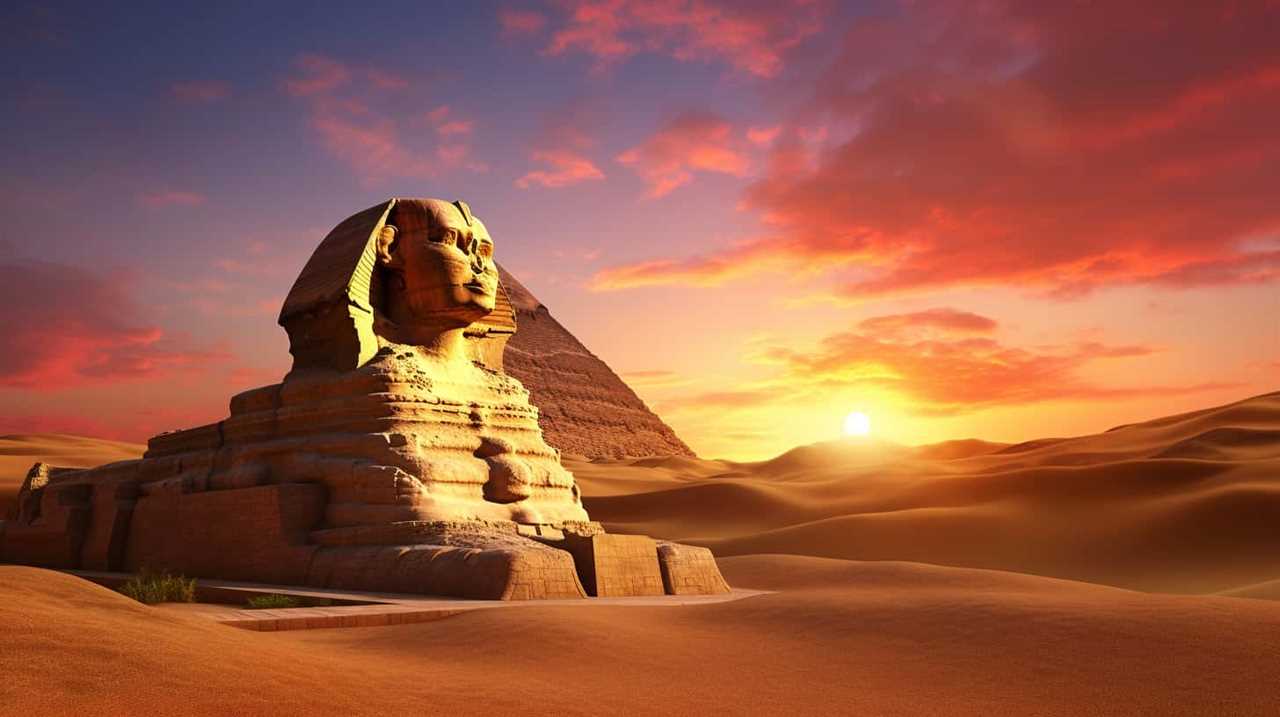
Noah and the Great Flood
The story of Noah and the Great Flood has had a significant global impact throughout history, as it’s a narrative that’s found in various cultures and religions.
The account of the flood showcases Noah’s divine intervention, as he’s chosen by God to build an ark and save humanity and the animal kingdom from destruction.
This story also provides moral lessons, teaching us about the consequences of disobedience and the importance of faith and righteousness.
Flood’s Global Impact
One of the most significant events in human history is the global flood described in the story of Noah and the Great Flood. This catastrophic event had a profound impact on the world and its inhabitants, leaving behind a trail of destruction and a lasting imprint on the collective memory of humanity. The flood’s aftermath can be seen in various forms of historical evidence, ranging from ancient flood myths found in different cultures to geological records that indicate a large-scale flood event.

To further understand the global impact of the flood, let’s take a look at the following table that highlights some key aspects:
| Aspect | Description |
|---|---|
| Cultural | Flood myths can be found in numerous ancient civilizations, such as the Epic of Gilgamesh from Mesopotamia and the story of Deucalion in Greek mythology. These stories often share similarities with the biblical narrative, indicating a common ancestral memory of the event. |
| Geological | Geological records show evidence of large-scale flooding events, such as sediment deposits and erosion patterns, which align with the biblical timeframe for the flood. These findings support the idea that a global flood did occur. |
| Anthropological | The flood’s impact on human populations can be seen in the dispersion and migration patterns of different ethnic groups. Various population groups can trace their origins back to a common ancestral group, which could be linked to the survivors of the flood. |
| Archaeological | Archaeological discoveries, such as the remains of ancient civilizations buried beneath layers of sediment, provide further evidence of a catastrophic flood event. These findings help to validate the historical accuracy of the biblical account. |
Understanding the historical backdrop of the flood’s global impact is crucial in comprehending the significance of Noah’s divine intervention, which we will explore in the next section.
Noah’s Divine Intervention
Through Noah’s divine intervention, humanity was saved from the devastating global flood. According to the biblical account, God saw the wickedness of humanity and decided to bring about a cataclysmic flood to cleanse the earth. However, Noah found favor in God’s eyes and was instructed to build an ark to house his family and pairs of every kind of animal.
This divine intervention allowed Noah and his family to survive the flood and eventually repopulate the earth. The story of Noah’s ark is one of hope and redemption, demonstrating God’s mercy and grace towards humanity. It serves as a reminder of the consequences of sin and the possibility of salvation through divine intervention.

Moral Lessons Learned
As we delve into the moral lessons learned from Noah and the Great Flood, it becomes apparent that divine intervention played a crucial role in the preservation of humanity.
The story of Noah’s Ark serves as a parable, teaching us valuable lessons about faith, obedience, and the consequences of our actions.
One important lesson we can derive from this story is the need to heed warnings and follow divine guidance. Noah’s unwavering faith and obedience to God’s instructions allowed him and his family to be saved from the devastation of the flood.
Additionally, the role of forgiveness is highlighted in this story. Despite humanity’s wickedness, God showed mercy by sparing Noah and his family. This reminds us of the power of forgiveness and the importance of extending it to others, even in the face of adversity.

Abraham’s Covenant With God
In our exploration of the historical backdrop of iconic Bible verses, we come across an extraordinary event: God’s covenant with Abraham. This covenant, found in Genesis 17, is a significant moment in biblical history as it establishes a special relationship between God and Abraham’s descendants. The covenant promises that Abraham will become the father of many nations, and that his descendants will inherit the Promised Land.
Abraham’s faith plays a crucial role in this covenant. Despite his old age and his wife Sarah’s barrenness, Abraham believed in God’s promise of descendants. This unwavering faith demonstrated Abraham’s trust in God’s ability to fulfill His word.
Another pivotal moment in Abraham’s story is the sacrifice of his son, Isaac. In Genesis 22, God tests Abraham’s faith by commanding him to offer Isaac as a burnt offering. Despite the immense pain and confusion, Abraham obediently follows God’s command. However, at the last moment, God provides a ram for the sacrifice, sparing Isaac’s life. This event further solidifies the covenant between God and Abraham, as it showcases Abraham’s unwavering commitment and obedience to God’s will.
Abraham’s covenant with God laid the foundation for the nation of Israel and has had profound implications throughout history. It serves as a reminder of the importance of faith, obedience, and trust in God’s promises.
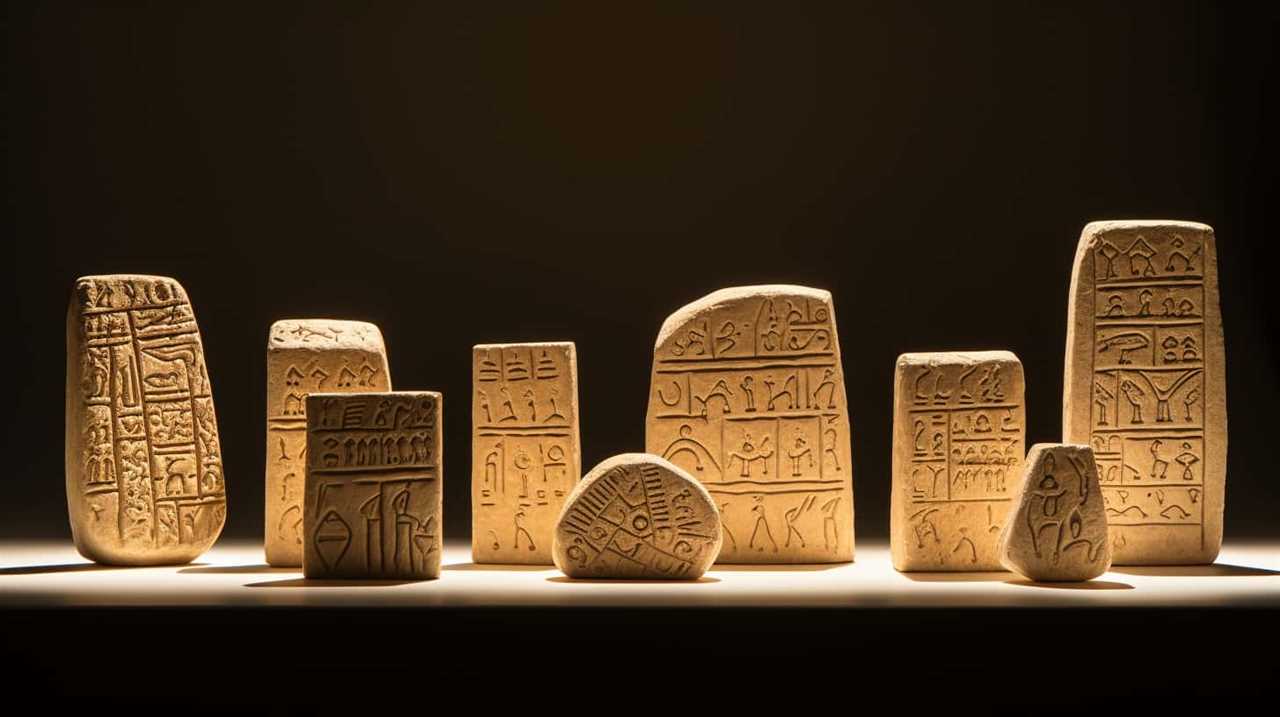
Moses and the Ten Commandments
We learned about the significance of Abraham’s covenant with God, and now let’s delve into the momentous event of Moses receiving the Ten Commandments. This event occurred after the Israelites were freed from slavery in Egypt and had journeyed to Mount Sinai. It was during this time that Moses went up the mountain to meet with God and receive the Ten Commandments.
The Ten Commandments weren’t just a set of rules, but a covenant renewal between God and the Israelites. They served as a guide for how the Israelites were to live their lives and maintain a close relationship with God. The commandments covered various aspects of life, including worship, morality, and relationships with others.
However, the journey towards receiving the Ten Commandments wasn’t without its challenges. While Moses was on the mountain, the Israelites grew impatient and created a golden calf to worship. This incident greatly angered God, and Moses had to intercede on behalf of the people to prevent their destruction. Despite this setback, the covenant was eventually renewed, and the Ten Commandments were given to the Israelites as a reminder of their commitment to God.
The story of Moses and the Ten Commandments is a pivotal event in biblical history. It showcases the importance of covenant renewal and the challenges that can arise when people stray from their commitments. The Ten Commandments continue to be a fundamental moral and ethical code for many people today.

David and Goliath
The encounter between David and Goliath showcases a remarkable display of courage and faith. It’s a story that has captivated audiences for centuries, and its imagery is rich with symbolism and meaning. Here are three key elements that paint a vivid picture of David’s bravery and Goliath’s defeat:
- The size disparity: Goliath, a towering giant, stood at an intimidating height of nine feet. In contrast, David, a young shepherd, was of average stature. This stark difference in size highlights the seemingly insurmountable odds that David faced.
- The unconventional weapon: Armed with only a sling and a stone, David stood before Goliath. This humble choice of weaponry emphasizes the power of strategy and resourcefulness. It underscores David’s unwavering trust in God’s guidance, knowing that it isn’t the size of the weapon but the strength of faith that matters.
- The triumphant outcome: With a single, well-aimed shot, David’s stone struck Goliath’s forehead, bringing him down. Goliath, once feared and invincible, lay defeated on the ground. This ultimate victory demonstrates the triumph of courage and faith over seemingly insurmountable challenges.
The story of David and Goliath serves as a timeless reminder that true strength lies not in physical prowess but in the unwavering belief in oneself and in the divine. It teaches us that with courage, faith, and resourcefulness, we can overcome any obstacle that comes our way.
The Birth of Jesus
The arrival of Jesus brought hope and joy to the world. The nativity story, which is found in the Gospels of Matthew and Luke, narrates the circumstances surrounding Jesus’ birth. According to the Gospel accounts, Jesus was born in Bethlehem to Mary and Joseph, who’d traveled there for a census. This event fulfilled the prophecy that the Messiah would be born in Bethlehem, a significant detail that added to the significance of Jesus’ birth.
To understand the historical context of Jesus’ birth, it’s important to explore his genealogy. Matthew’s Gospel provides a detailed account of Jesus’ lineage, tracing it all the way back to King David. This genealogy demonstrates Jesus’ connection to the Davidic lineage, further reinforcing his claim as the long-awaited Messiah.

Now, let’s transition into the subsequent section about Jesus’ Sermon on the Mount, where he delivered some of his most iconic teachings.
Jesus’s Sermon on the Mount
As we begin exploring Jesus’s Sermon on the Mount, we can first examine the meaning of the Beatitudes, the opening verses of the sermon. These teachings, which emphasize qualities such as humility, mercy, and peacemaking, have had a profound impact on the development of Christianity.
Additionally, the Sermon on the Mount continues to be relevant in modern society, as its teachings on love, forgiveness, and ethical living provide a moral compass for individuals seeking guidance in their daily lives.
Meaning of Beatitudes
In our exploration of the historical backdrop of iconic Bible verses, let’s delve into the meaning of the Beatitudes, a profound teaching from Jesus’s Sermon on the Mount. The Beatitudes are a set of blessings that Jesus proclaimed to his disciples, outlining the qualities and attitudes that lead to true happiness and spiritual fulfillment. They serve as a guide for living a righteous life and offer insight into the values and priorities of the Kingdom of God.

- Poverty of spirit: This beatitude encourages humility and a recognition of our dependence on God. It reminds us that true wealth lies in our spiritual connection rather than material possessions.
- Mourning: This beatitude highlights the importance of empathy and compassion for others. It teaches us to mourn with those who are suffering and to seek comfort in God’s love and presence.
- Meekness: This beatitude emphasizes the virtue of gentleness and humility. It encourages us to be patient, forgiving, and to trust in God’s ultimate justice.
The Beatitudes have had a profound impact on Christian teachings and practices throughout history. They’ve shaped the understanding of morality and ethics, inspiring believers to seek righteousness and social justice. Today, they continue to guide Christians in their pursuit of spiritual growth and remind us of the values that Jesus taught during his earthly ministry.
Influence on Christianity
Jesus’s Sermon on the Mount has left a lasting impact on the development and practices of Christianity. Its influence on theology and cultural significance cannot be overstated. The sermon, found in the Gospel of Matthew, contains key teachings that have shaped Christian beliefs and practices throughout history.
One way in which the Sermon on the Mount has influenced theology is through its emphasis on love, compassion, and forgiveness. Jesus’s teachings on turning the other cheek, loving one’s enemies, and the Golden Rule have become foundational principles of Christian ethics.
Furthermore, the Sermon on the Mount has had a profound cultural significance. Its teachings have inspired countless individuals, movements, and institutions to strive for a more just and peaceful society. The sermon’s teachings on humility, meekness, and righteousness have influenced Christian art, literature, and music, leaving an indelible mark on Western culture.

The following table summarizes some of the key teachings found in Jesus’s Sermon on the Mount:
| Teachings | Summary |
|---|---|
| The Beatitudes | Blessed are the poor in spirit, the meek… |
| Salt and Light | Christians are called to be the salt of… |
| Fulfillment of the Law | Jesus came to fulfill the Law and the… |
| Love for Enemies | Christians are to love their enemies… |
| The Lord’s Prayer | A model prayer taught by Jesus… |
Relevance in Modern Society
The relevance of Jesus’s Sermon on the Mount in modern society is evident in its enduring impact on Christian ethics and values. This iconic sermon, found in the Gospel of Matthew, addresses a range of topics that continue to resonate with believers today.
- Social justice: Jesus’s teachings on love, compassion, and justice are still relevant in our world, where inequality and injustice persist. His call to care for the poor, the marginalized, and the oppressed serves as a powerful reminder of our responsibility to create a more just society.
- Technology and faith: In an age where technology dominates our lives, Jesus’s teachings encourage believers to prioritize relationships and spiritual growth over material possessions and worldly pursuits. His reminder to seek first the kingdom of God challenges us to find balance in our increasingly digital and fast-paced world.
- Moral guidance: The timeless principles taught in the Sermon on the Mount provide a moral compass for navigating the complexities of modern society. From teachings on forgiveness, honesty, and integrity, to instructions on how to live a life of righteousness, Jesus’s words continue to guide believers in their daily lives.
The Last Supper and Betrayal
As we delve into the historical backdrop of one of the most pivotal moments in Christianity, the Last Supper and Betrayal stand as a haunting testament to the complexities of human nature. The betrayer’s motive in this iconic event was rooted in personal gain and greed. Judas Iscariot, one of Jesus’s disciples, made a deal with the chief priests to hand Jesus over to them in exchange for thirty pieces of silver. This act of betrayal, committed by someone who was once a trusted companion, showcases the frailty and moral ambiguity within us all.
The aftermath of betrayal was profound and far-reaching. After Judas’s act, Jesus was arrested by the authorities and subjected to a series of trials that ultimately led to his crucifixion. The Last Supper, which was meant to be a solemn and sacred occasion, became a haunting prelude to Jesus’s impending suffering and death. The disciples were left confused and devastated, questioning their own loyalty and faith. This moment in history serves as a reminder that even those closest to us can falter, and that the consequences of betrayal can be devastating.

As we transition into the subsequent section about Jesus’s crucifixion and resurrection, we see how these events are intrinsically linked to the Last Supper and Betrayal. The ultimate sacrifice made by Jesus on the cross and his subsequent resurrection are central to the Christian faith, and they represent the triumph of love, redemption, and forgiveness over betrayal and despair.
Jesus’s Crucifixion and Resurrection
After the events of the Last Supper and Betrayal, we witness the profound impact of Jesus’s crucifixion and resurrection. These pivotal moments in Jesus’s life hold great significance in Christian theology and have shaped the beliefs and practices of millions of followers throughout history.
- Jesus’s sacrifice: The crucifixion of Jesus is seen as the ultimate act of sacrifice, as he willingly gave up his life to atone for the sins of humanity. This act of selflessness is central to the concept of redemption in Christianity, offering believers the opportunity for forgiveness and salvation.
- Resurrection and redemption: The resurrection of Jesus three days after his crucifixion is a cornerstone of Christian faith. It symbolizes victory over death and offers the promise of eternal life to believers. The resurrection is seen as a powerful demonstration of God’s power and love, and it serves as a source of hope and inspiration for Christians worldwide.
- The significance of the empty tomb: The empty tomb is a powerful symbol of Jesus’s resurrection. It represents the triumph of life over death and serves as evidence of Jesus’s divinity. The empty tomb is often associated with the idea of new beginnings and the hope of spiritual rebirth.
The crucifixion and resurrection of Jesus are central to the Christian faith, representing the ultimate act of sacrifice and the promise of redemption. These events hold deep theological and spiritual significance, serving as a foundation for belief and shaping the lives of believers throughout history.
The Conversion of Saul
In our exploration of the historical backdrop of iconic Bible verses, we come across a pivotal event known as the Conversion of Saul. This event is significant not only for its impact on early Christianity but also for the transformation it brought about in Saul, who later became known as the apostle Paul.
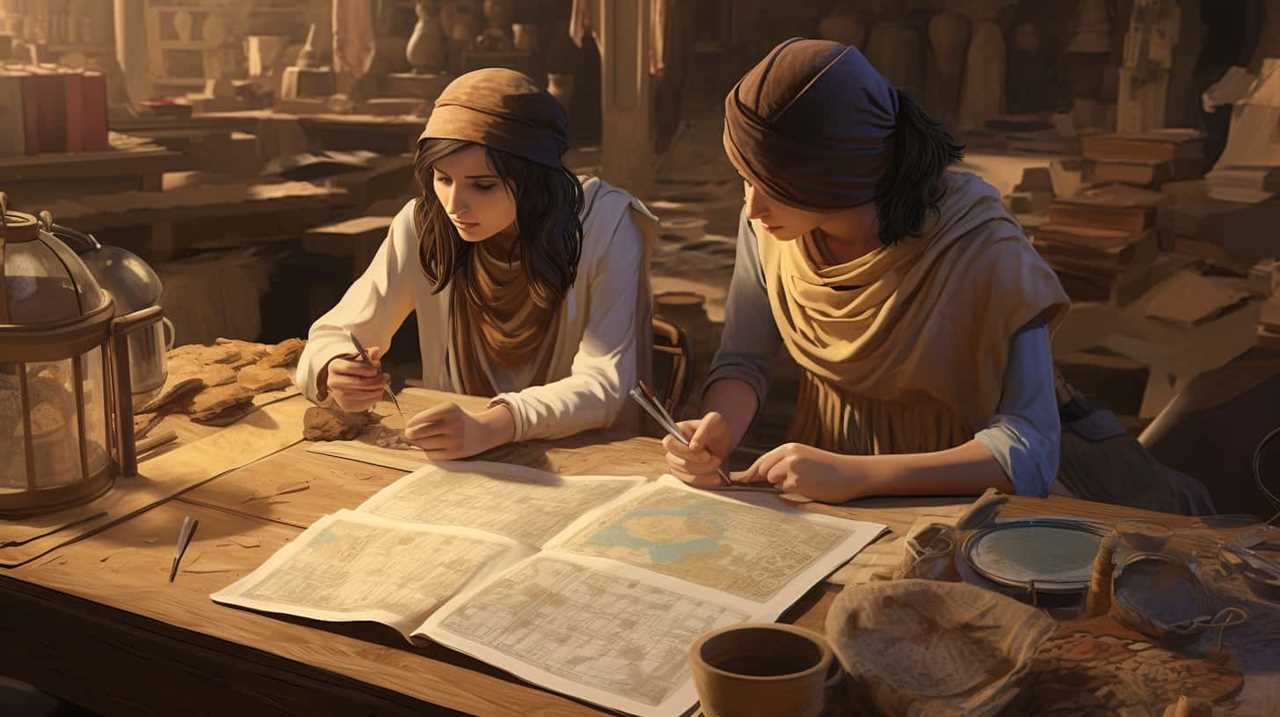
Saul, a devout Jewish Pharisee, was initially a staunch persecutor of early Christians. He played a prominent role in the persecution and even the martyrdom of those who followed the teachings of Jesus. However, on his way to Damascus, Saul had a life-altering encounter with the risen Christ. This encounter led to Saul’s transformation and his subsequent conversion to Christianity.
From then on, Saul became a passionate follower of Jesus, dedicating his life to spreading the gospel and establishing Christian communities throughout the Roman Empire. The Conversion of Saul marks a turning point in the early Christian movement, as Saul’s conversion not only brought about a change in his own life but also played a significant role in the growth and expansion of Christianity.
It set the stage for Paul’s missionary journeys, which we’ll explore in the next section.
Paul’s Missionary Journeys
As we explore the historical backdrop of iconic Bible verses, it’s essential to discuss Paul’s missionary journeys. These journeys took him to key destinations such as Ephesus, Corinth, and Rome, where he spread the teachings of Christianity and established early Christian communities.

Paul’s missionary journeys had a profound impact on the growth and development of early Christianity, as he played a crucial role in converting many to the faith and establishing the foundations of the Church. However, these journeys weren’t without challenges, as Paul faced opposition, persecution, and even imprisonment.
Despite these obstacles, Paul’s unwavering determination and faith led to triumphs and the enduring legacy of his missionary work.
Key Destinations and Events
During Paul’s missionary journeys, we encountered diverse cultures and faced numerous challenges that shaped our understanding of Christianity. These journeys took us to key destinations and significant events that played a crucial role in spreading the message of Christ.
- Antioch: Our first missionary journey began in Antioch, where we were commissioned by the church to embark on our mission. This vibrant city served as a launching point for our travels, and we witnessed the conversion of many Gentiles to Christianity.
- Ephesus: In Ephesus, we encountered a thriving center of pagan worship, particularly dedicated to the goddess Artemis. Our preaching sparked a riot, highlighting the resistance we faced in spreading the gospel. Despite the opposition, we established a strong Christian community in this influential city.
- Rome: Our final journey led us to the heart of the Roman Empire. Here, we faced imprisonment and persecution. Despite these hardships, our presence in Rome allowed us to share the gospel with influential individuals and solidify the foundations of early Christianity.
These key destinations and events significantly shaped the growth and development of the early Christian movement.
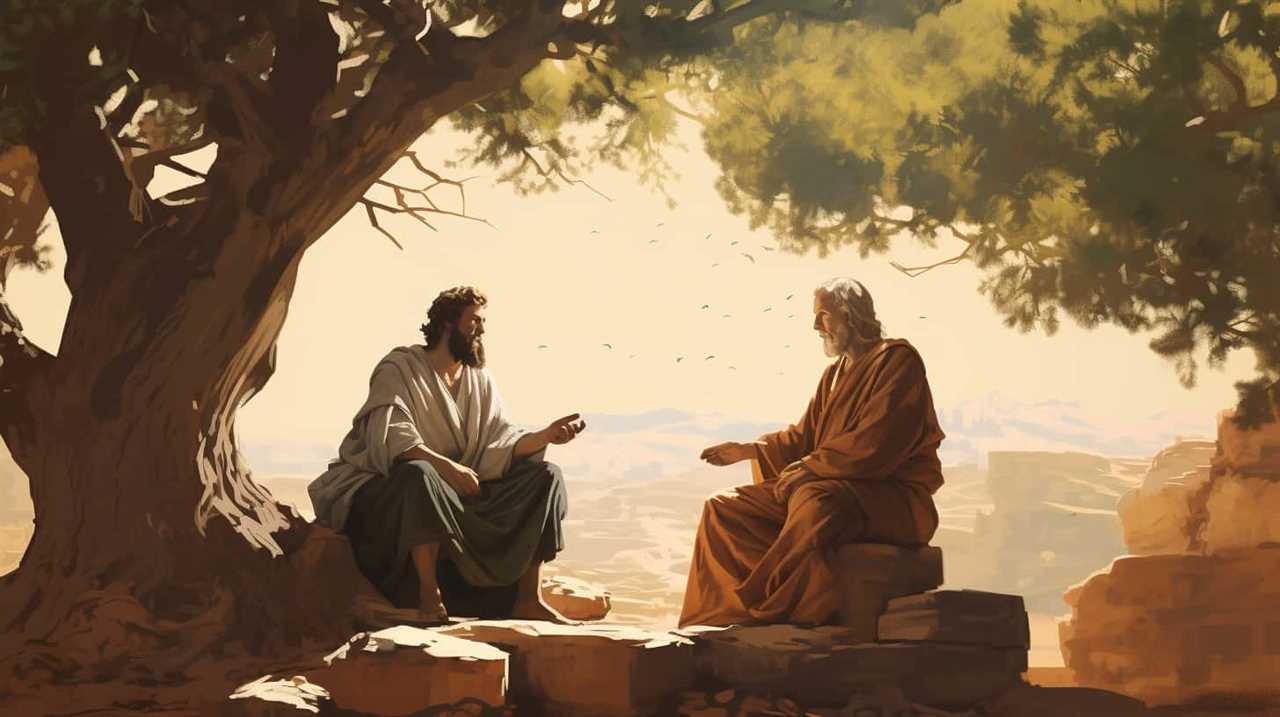
Impact on Early Christianity
Embarking on Paul’s missionary journeys, we encountered diverse cultures and faced numerous challenges that shaped our understanding of Christianity, ultimately impacting the early Christian movement.
These journeys brought us into contact with influential figures who played a crucial role in spreading the message of Christ. One such figure was Barnabas, a trusted companion of Paul, who accompanied him on his first missionary journey to Cyprus and Asia Minor. Through their preaching, they established Christian communities and converted many Gentiles.
However, our journeys weren’t without theological debates. We encountered resistance from some Jewish communities who struggled to accept the inclusion of Gentiles in the Christian faith. These debates forced us to articulate and defend our beliefs, leading to the development of important theological arguments that would shape the future of Christianity.
Challenges and Triumphs
Throughout Paul’s missionary journeys, we encountered a myriad of challenges and experienced moments of triumph that significantly shaped the course of early Christianity. These struggles and achievements were instrumental in spreading the message of Jesus and establishing Christian communities in various parts of the Mediterranean region.

- Persecution: Paul faced intense opposition from both Jewish authorities and local pagan communities. He endured imprisonment, beatings, and even stoning for his beliefs. Despite these hardships, Paul remained steadfast in his mission, inspiring others to stand firm in their faith.
- Cultural barriers: The diverse cultures and languages of the places Paul visited presented significant challenges. However, Paul’s ability to adapt and communicate effectively allowed him to bridge these gaps and establish connections with people from different backgrounds.
- Conversion and growth: Despite the obstacles, Paul’s missionary journeys witnessed remarkable conversions and the establishment of thriving Christian communities. Through his teachings and the power of the Holy Spirit, Paul’s influence expanded the reach of Christianity, laying the foundation for its future growth.
These struggles and accomplishments set the stage for the subsequent section, where we’ll explore Paul’s famous sermon at Athens and its impact on early Christianity.
The Sermon at Athens
We delved into the historical context and significance of The Sermon at Athens, uncovering its profound impact on early Christian philosophy. The sermon at Athens was a pivotal moment in the spread of Christianity, as it represented a cultural exchange and philosophical dialogue between the Apostle Paul and the intellectuals of Athens.
During his visit to Athens, Paul found himself in the midst of a city known for its love of knowledge and philosophy. Wanting to engage with the Athenians, Paul delivered a sermon on the Areopagus, the hill where the city’s highest court met. This sermon showcased Paul’s understanding of Greek philosophy and his ability to connect it with Christian teachings.
Paul’s sermon was a masterful blend of cultural sensitivity and theological depth. He acknowledged the Athenians’ devotion to various gods and used their own religious practices as a starting point to introduce them to the one true God. Through his speech, Paul presented Christianity as a logical and intellectually satisfying belief system, appealing to the Athenians’ love for wisdom and knowledge.
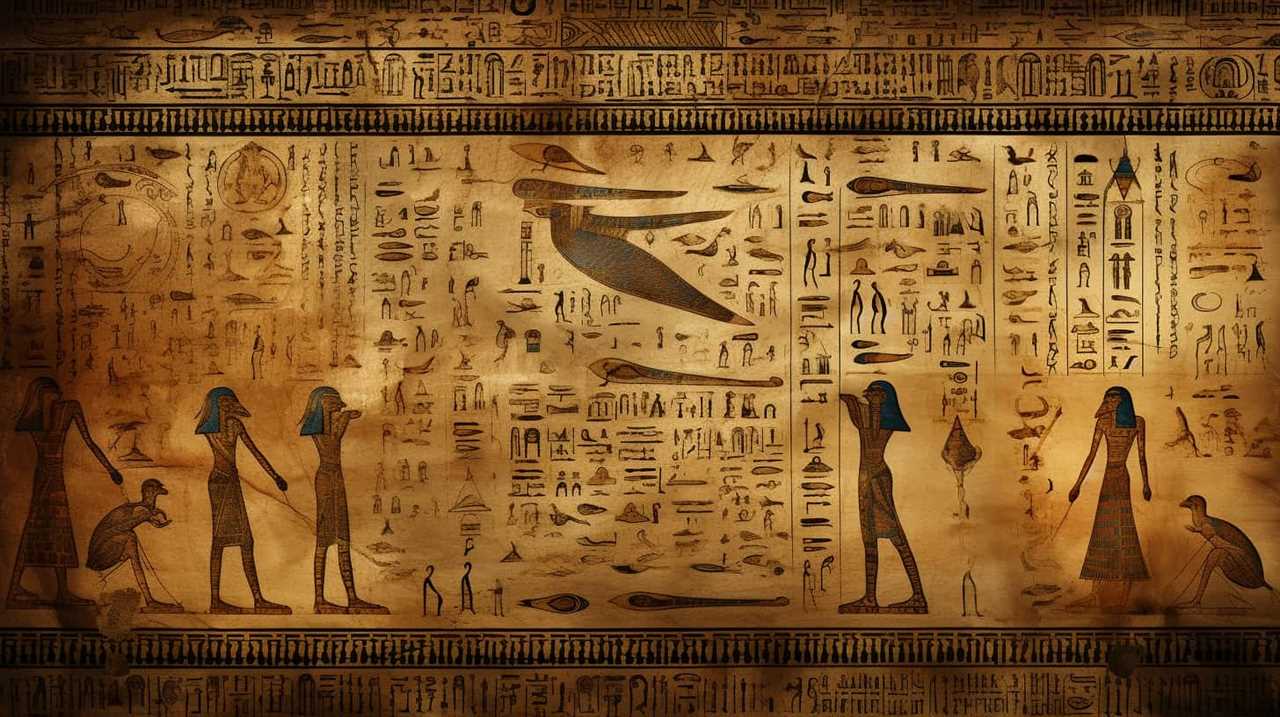
The sermon at Athens marked an important moment in the early Christian movement, as it demonstrated the ability of Christianity to engage with and challenge existing philosophical traditions. This encounter between Christianity and Greek philosophy laid the foundation for the development of Christian theology, particularly in terms of understanding God’s relationship with humanity and the role of reason in faith.
With the profound impact of The Sermon at Athens on early Christian philosophy, we now turn our attention to another significant biblical text: the revelation of John.
The Revelation of John
The Revelation of John is a book in the New Testament that’s known for its rich symbolism and vivid descriptions of end times prophecy. It’s believed to have been written by the apostle John during his exile on the island of Patmos.
Throughout the book, various symbols and imagery are used to convey spiritual truths and provide insights into the future.

Symbolism in Revelation
In the book of Revelation, a captivating display of symbolism unfolds, illuminating the profound visions and prophecies communicated by John. This biblical symbolism serves as a powerful tool to convey complex ideas and concepts to the audience.
Here are three examples that showcase the depth and intricacy of this symbolism:
- The Lamb of God: In Revelation, Jesus is often depicted as a lamb, symbolizing his sacrificial nature and role as the ultimate atonement for humanity’s sins.
- The Four Horsemen: These apocalyptic visions represent the forces of conquest, war, famine, and death, portraying the chaos and destruction that will accompany the end times.
- The Seven Seals: As the seals are opened, they reveal a series of events and judgments that will occur during the end times, each one symbolizing a different aspect of God’s plan for the world.
As we delve further into the symbolism of Revelation, we’ll explore the end times prophecies and their significance in biblical history.
End Times Prophecy
As we delve into the historical backdrop of iconic Bible verses, let’s now explore the significance of the End Times Prophecy in the book of Revelation.

The End Times Prophecy, also known as the Apocalypse or the Revelation of John, is a highly debated topic among theologians and scholars. The book of Revelation is filled with vivid imagery, symbolic language, and prophetic visions that depict the signs and events leading up to the end of the world.
The interpretation of these signs and symbols varies among different religious groups and individuals. Some view them as literal predictions of future events, while others see them as allegorical representations of spiritual truths.
Understanding the End Times Prophecy requires careful study, historical context, and a discerning approach to interpretation.
The Spread of Early Christianity
During our exploration of the historical backdrop of iconic Bible verses, we delve into the remarkable journey of how early Christianity spread across the ancient world. The spread of Christianity was a transformative and influential movement that shaped the course of history. Here are three key aspects of the spread of early Christianity:
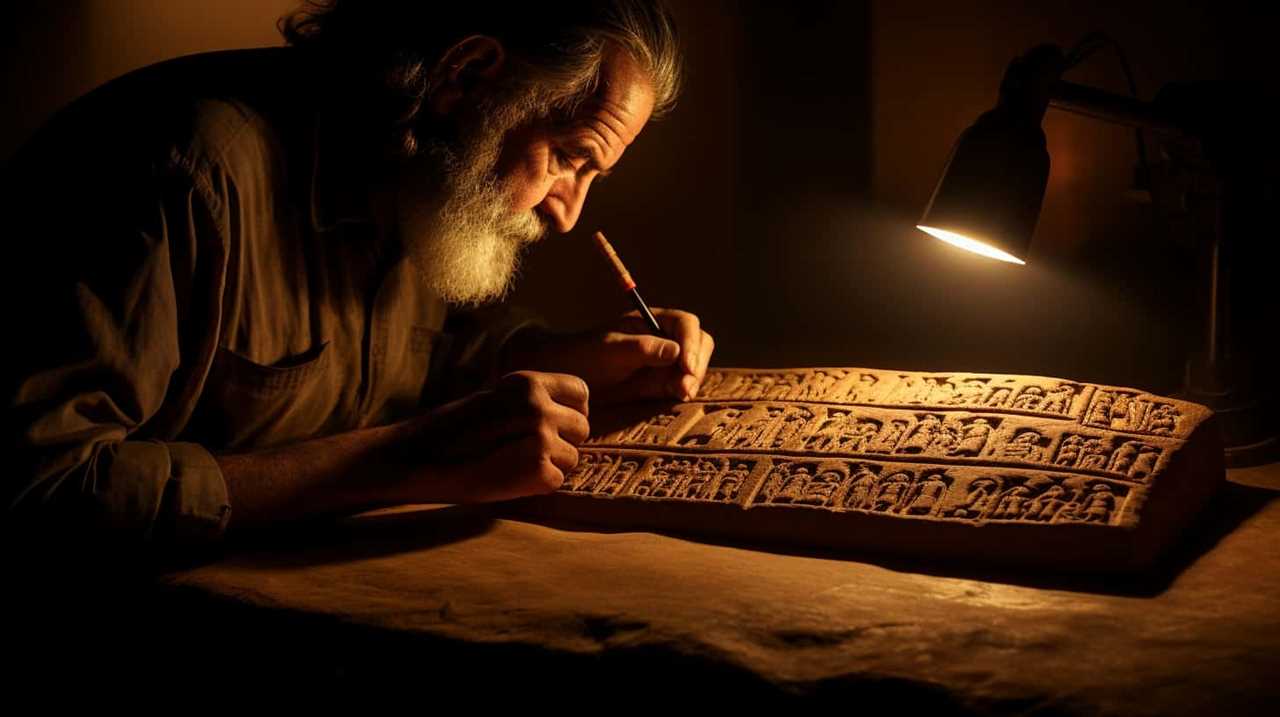
- Missionary efforts: The early Christian communities were deeply committed to spreading their faith. Missionaries traveled far and wide, carrying the message of Jesus Christ to different regions. They preached in marketplaces, synagogues, and public spaces, attracting both Jews and Gentiles to the new faith. Through their fervent dedication and persuasive teachings, these missionaries played a crucial role in the expansion of Christianity.
- Roman infrastructure: The Roman Empire, with its vast network of roads and trade routes, provided an ideal environment for the spread of Christianity. The efficient transportation system facilitated the movement of people, ideas, and messages. The apostle Paul, for example, made use of these roads to travel extensively and establish Christian communities in various cities.
- Martyrdom and persecution: The early Christians faced intense persecution from the Roman authorities, who viewed their faith as a threat to the stability of the empire. However, this persecution inadvertently helped to spread Christianity. The bravery and steadfastness of the martyrs inspired others to join the faith, leading to a rapid growth of Christian communities.
The spread of early Christianity was a complex process that involved missionary efforts, the Roman infrastructure, and the impact of persecution. Understanding these factors helps us appreciate the historical significance of this extraordinary journey.
Frequently Asked Questions
How Long Did It Take for God to Create the World?
It took God six days to create the world, according to the biblical account. The evidence supporting this comes from the book of Genesis, which describes the creation process in detail.
How Did Noah Gather All the Animals for the Ark?
Gathering all the animals for the ark was a colossal task for Noah. Facing numerous challenges, he diligently embarked on his mission, carefully selecting and gathering a diverse array of creatures, ensuring their survival and the preservation of species.
What Were the Specific Terms of Abraham’s Covenant With God?
The significance of Abraham’s covenant with God lies in its promise of descendants, land, and blessings. Its fulfillment is seen through the establishment of the nation of Israel and the eventual coming of Jesus Christ.

How Did Moses Receive the Ten Commandments From God?
During the receiving of the Ten Commandments, Moses communicated with God through divine means. Mount Sinai was chosen as the location for this significant event, showcasing God’s power and establishing the importance of His commandments.
Did David Defeat Goliath With Just One Stone?
Yes, David did defeat Goliath with just one stone. It may seem like a remarkable coincidence, but it was David’s unwavering faith and precise aim that overcame Goliath’s immense strength.
What Historical Context Adds to the Understanding of Iconic Bible Verses?
Understanding the history behind iconic verses can provide valuable insight into the cultural, social, and political context in which they were written. This context adds layers of meaning to the verses, allowing for a deeper understanding of their significance and relevance to the time in which they were written.
Conclusion
In conclusion, exploring the historical backdrop of iconic Bible verses unveils a tapestry of profound events that have shaped the course of humanity. From the creation of the world to the spread of early Christianity, each story carries a weight of significance that resonates through the ages.
Like a delicate thread weaving through time, these verses offer a glimpse into the rich tapestry of our shared history, inviting us to reflect on the enduring power of faith and the profound impact it continues to have on our lives.

Fritz is a writer whose humor and wit infuse life into words. His creativity, combined with a profound love for the English language, makes him a unique voice at afterQuotes. Fritz’s engagement with books, culture, and social media adds depth to his contributions, making them resonate with our diverse audience.

